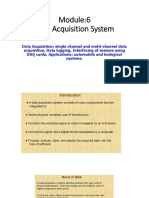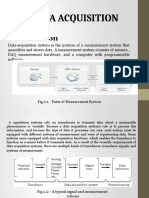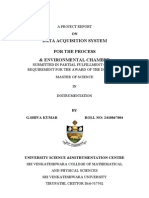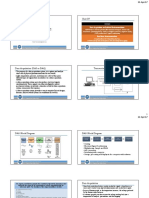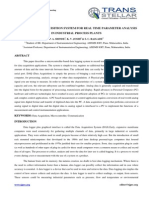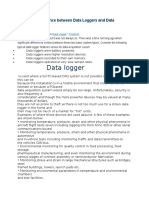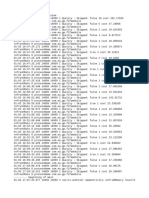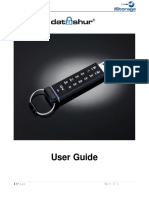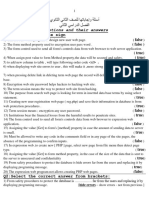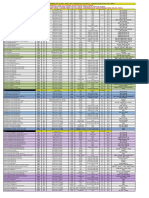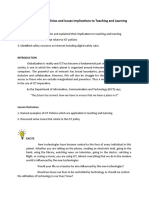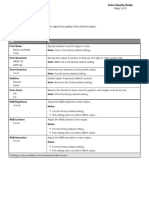0% found this document useful (0 votes)
22 views13 pagesAssignment Questions On Data Acquistion
This document discusses 5 potential assignment questions on the topic of data acquisition. The first question covers sensors, their applications, principles of operation, types, applications in industries and IoT, interfacing, challenges, innovations and future trends. The second question covers data loggers, their components, types, sensor integration, data storage solutions, data retrieval, remote monitoring, case studies and future developments. The third question discusses interface and connectivity in data acquisition systems, types of interfaces, communication protocols, wireless connectivity, integration with IoT, data security, compatibility and case studies. The fourth question examines applications of data acquisition in industrial automation, environmental monitoring, healthcare, automotive, aerospace, structural health monitoring, energy management, research and case
Uploaded by
zaamideCopyright
© © All Rights Reserved
We take content rights seriously. If you suspect this is your content, claim it here.
Available Formats
Download as PDF, TXT or read online on Scribd
0% found this document useful (0 votes)
22 views13 pagesAssignment Questions On Data Acquistion
This document discusses 5 potential assignment questions on the topic of data acquisition. The first question covers sensors, their applications, principles of operation, types, applications in industries and IoT, interfacing, challenges, innovations and future trends. The second question covers data loggers, their components, types, sensor integration, data storage solutions, data retrieval, remote monitoring, case studies and future developments. The third question discusses interface and connectivity in data acquisition systems, types of interfaces, communication protocols, wireless connectivity, integration with IoT, data security, compatibility and case studies. The fourth question examines applications of data acquisition in industrial automation, environmental monitoring, healthcare, automotive, aerospace, structural health monitoring, energy management, research and case
Uploaded by
zaamideCopyright
© © All Rights Reserved
We take content rights seriously. If you suspect this is your content, claim it here.
Available Formats
Download as PDF, TXT or read online on Scribd
/ 13




